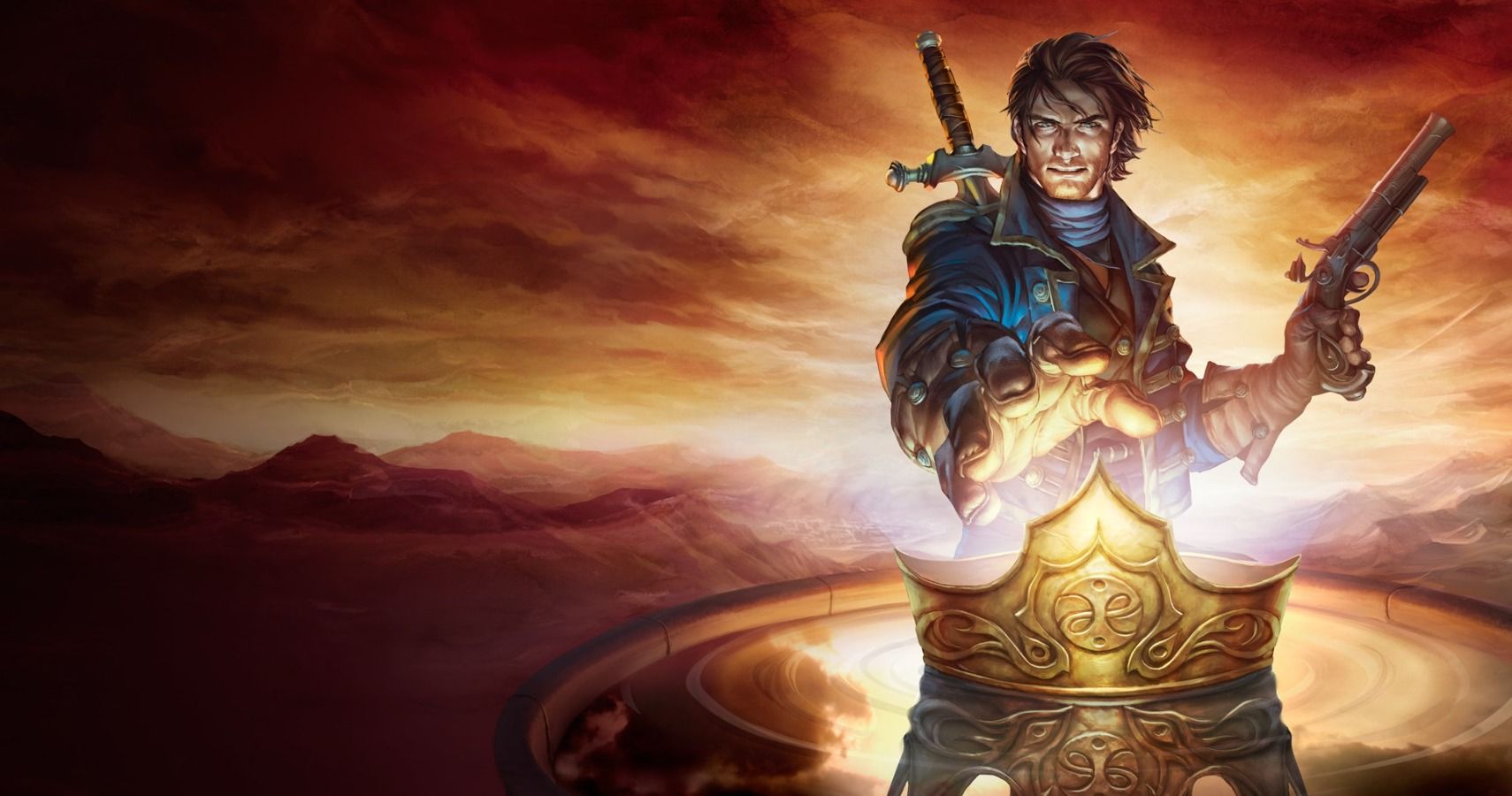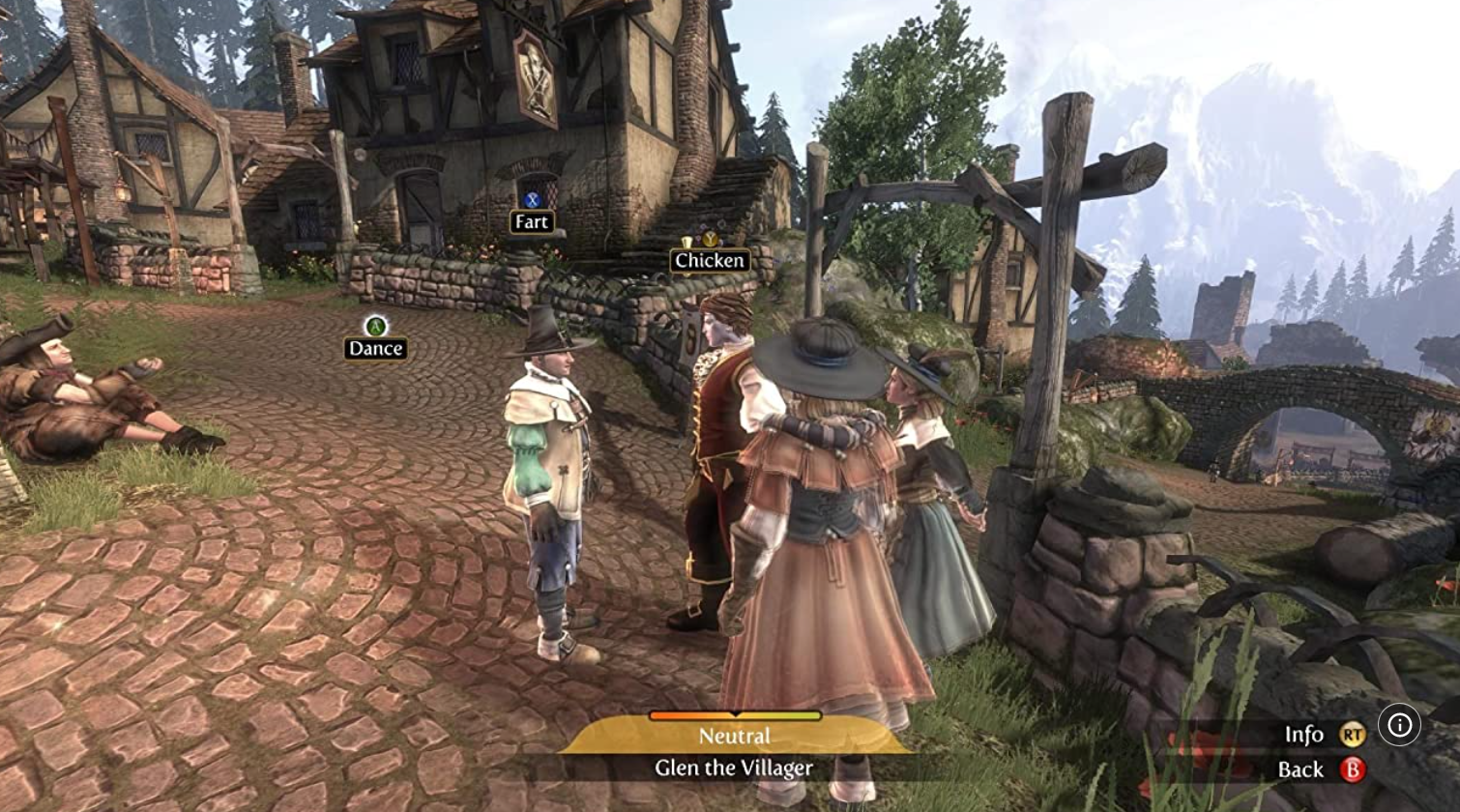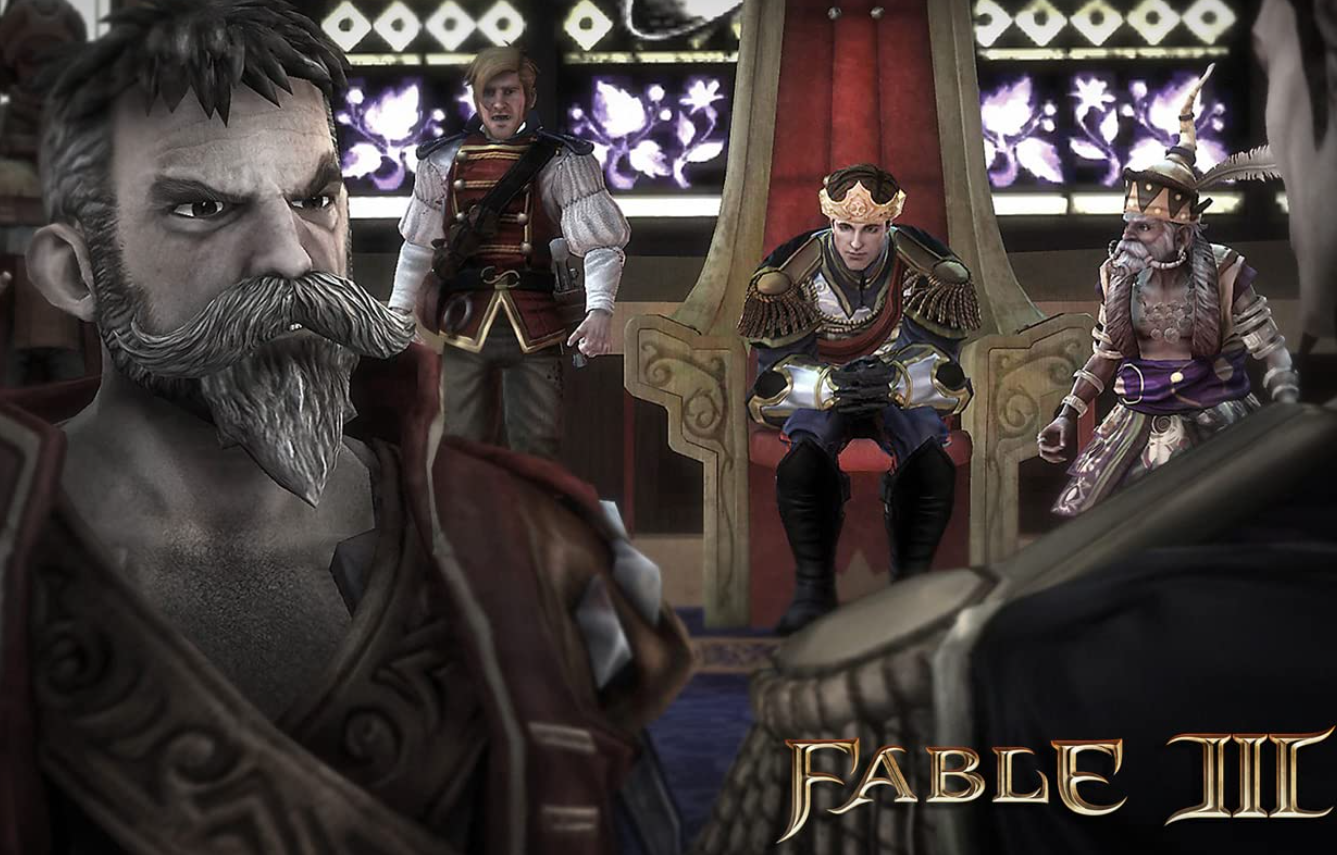As far as Fable games are concerned, Fable 3 has always been a bit of an ugly duckling. On one hand, it’s difficult to follow in the footsteps of a game as universally beloved as Fable 2. On the other, it’s especially brave to look at those footsteps stretched out in front of you and say, “Actually… I reckon I’ll walk the long way home.”
It’s important to say right from the get-go that I didn’t love Fable 3. I liked it in a lot of ways, and boy was I happy to hear Stephen Fry’s dashingly dapper Reaver lambast everyone in his immediate vicinity with insults that were dour and spirited in equal measure. But it was a real departure from the sheer debauchery that Fable 2 paraded around.
Instead of murdering people in the middle of Bowerstone and growing big devilish horns, you had to manage a kingdom and decide whether it was more important to build a school or a brothel. This structure is excellently designed, mind, and went on to define similar systems in other games like Dragon Age: Inquisition. But the magic of Fable’s chaotic mayhem was rechanneled into something a bit more serious, a bit more grounded. While I vastly preferred the old versions of Fable, this wasn’t a bad thing. Fable games are anything if not ambitious, and once a game tries something new that’s genuinely worthwhile… well, I don’t care all that much if it’s not up my street — even failed experiments can help steer progress. Now that a new Fable game is confirmed to be in the works, I’m immensely glad that Fable 3 exists, because for as much stink as people talk about it, it’s a smart, audacious, and important game.
Let’s also remember that Fable 3’s dog companion extends far beyond the contemporary “Can you pet the dog?” phenomenon that seems to have been adopted as a marketing tactic for new and upcoming games. In Fable 3 you can teach your dog tricks, and 30 seconds later it will rip an enemy’s throat out. This disparity is par for the course for Fable 3, which is a game that seems to have amassed every existing genre into its massively hodgepodge makeup. Fable 3 is The Sims. Fable 3 is Dishonored. Fable 3 is Grand Theft Auto. You can use your magical affinity to protect innocent people from hordes of vindictive monsters, or you can pump the rent prices in Aurora up so high that people can’t even afford to buy vegetables in the worst place on earth. You can marry someone, absorb their assets, and then file for immediate divorce. They won’t be happy about it, and the game’s morality system will have its due impact on you — but you can do it. It’s a life simulator, a fantasy RPG, a tycoon management game, a rom-com, and every single thing in between. Sometimes it’s too much — how do you even begin to reconcile all of that in a coherent way? But most of the time it’s actually genuinely smart. It’s just not Fable 2, and people — including 14-year-old me — hated that.
It is also the single best implementation of cause-and-effect relationships I have ever seen in a game. A lot of this has to do with the Pratchett-esque liveliness of the characters, but it can at least partially be attributed to how ambitious its long-term consequences are, too. You’re given a year to raise the arbitrary sum of 6.5 million gold, and you can do this by selling out allies, refusing to build hospitals, or working as a legitimate business owner in a cutthroat early capitalist industrial regime. No matter what you do, you’re going to be bitten in the arse somehow, which is always refreshingly real in the most tongue-in-cheek way possible.
Fable 3 is a weird game to look back on, mostly because it’s largely confined to the Molyneux meme playground. It’s easy to look at it and think of it as the product of, “What if there was a game that had you as the powerful protagonist, which actually focused not on the means of attaining your power, but on the mundane responsibilities that follow it?” Ultimately, that’s a huge part of what Fable 3 is. It’s not a headlong rush to a climactic battle where the good guys win. It’s not about slaying a dragon with your level 100 magical sword. In a lot of ways it’s actually quite tricky — its inherent humor almost encourages you to be as cheeky as possible, and you reckon you can swindle everyone into helping you defeat the Big Bad at the end of the game. But that’s not the end of the game, and nobody really cares that you saved the world because you fleeced them to do it.
Fable 3 is ten years old today. It’s not as good as Fable or Fable 2 — if you’ve read this far, you’ll know that isn’t the argument I’m making. The argument is that Fable 3 is an oddly unique game. Ten years later, I’ve yet to see anything remotely like it, and I think you’d be hard pressed to find something that is more unanimously ambitious than it is. Yes, there have been more impressive art styles. Yes, I’m sure another game has a far better skill system. But as a whole, nobody ever told the people making Fable 3 that actually, what they were doing was a bit too much. Actually, maybe more is not better. Actually, we can have property management and an entire monarch simulator lapped onto the end of an industrial revolution/medieval fantasy hybrid RPG, but come on. Do we really need full animations for baking pies and dog tricks? “Of course we do,” came Lionhead’s resounding response in my imagination. “Otherwise it wouldn’t be Fable.”
That’s the thing — I love the Fable dog, and I love the art. I love the devil horns and the tricksy little gnomes. But I don’t think Fable 2 was like Fable, so I’m not sure why so many people were annoyed about Fable 3 not being Fable 2: Again. That’s why I was annoyed, as well as pretty much anybody I asked about it. But in hindsight, it makes very little sense to me — I would hope that the new Fable game in development isn’t just a rehash of Fable 2. I’d hope that it takes a lot of its lessons — for better and for worse — from Fable 3.
Honestly, I called Fable 3 shite after I finished it at 14, despite voluntarily pumping about 50 hours into it. “This is so bad, I’m going to keep playing it. I hate this game, no I can’t go to bed yet.” I think there was always something drawing me to it, no matter how much I tried to dislike it for not picking up from directly where Fable 2 left off and featuring all of the exact same characters. And now, ten years later — I just wish more people talked about it, because I still think people have yet to fully appreciate how genuinely ambitious it all was.



